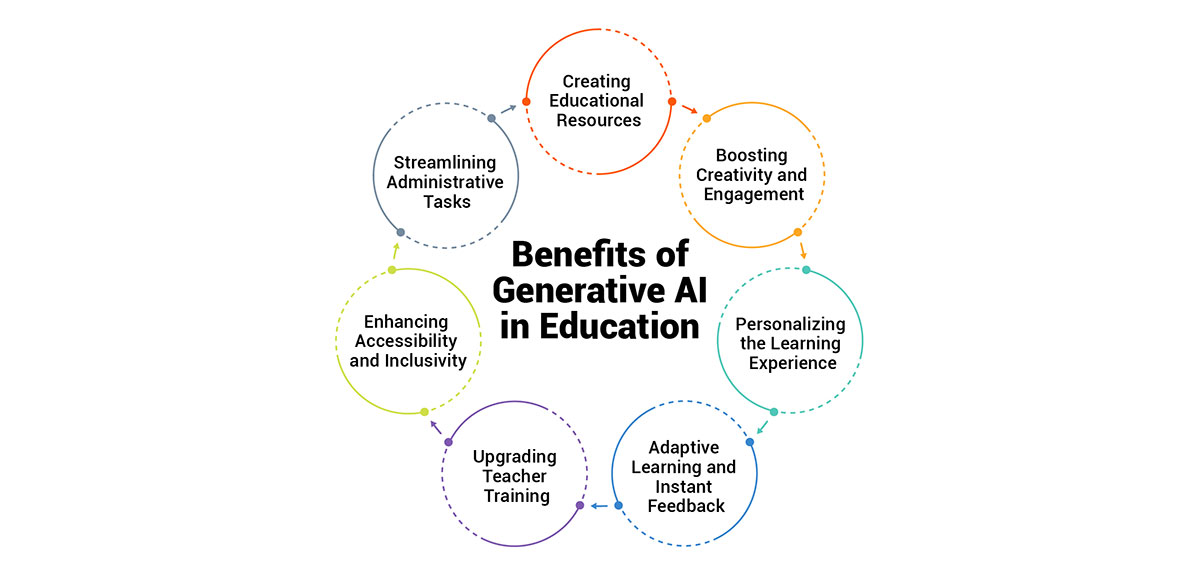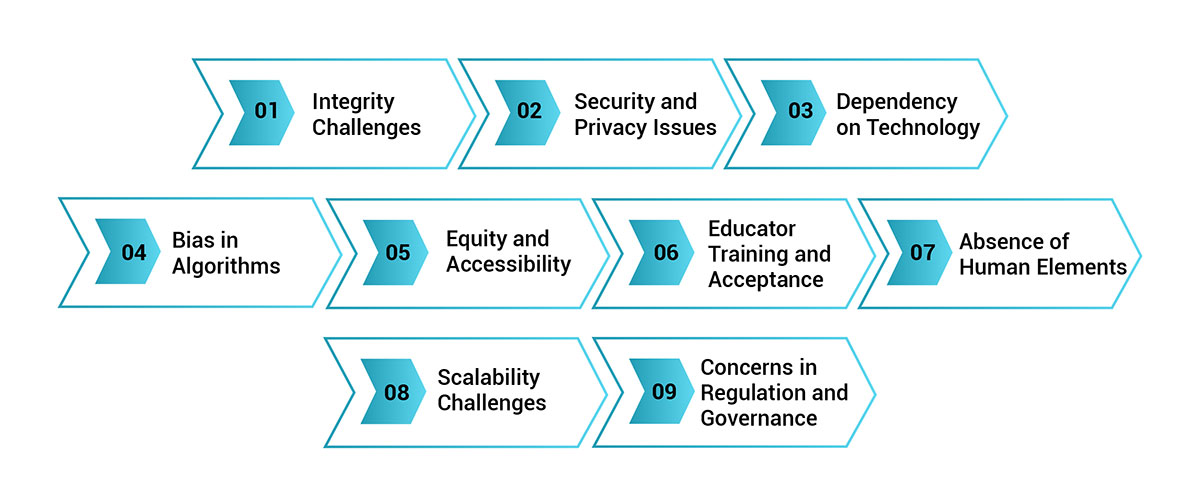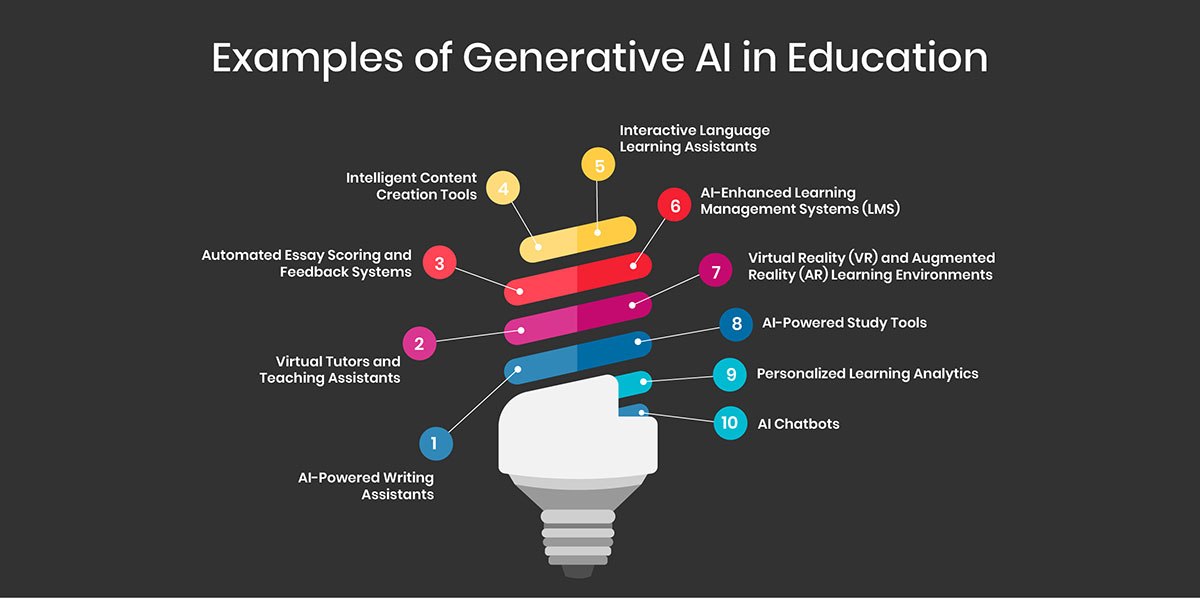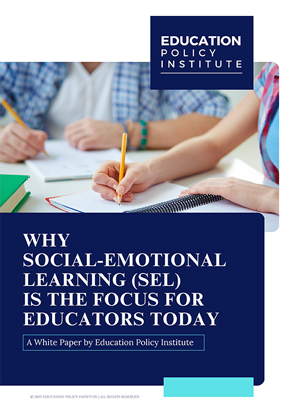Imagine a classroom where every student's learning journey is uniquely built to their needs, with a virtual tutor that adjusts to their pace and creates personalized educational materials. This isn't a distant dream, but a reality enabled by generative AI in education. By moving beyond the limitations of traditional teaching methods, AI can offer individualized learning experiences, fostering deeper understanding and engagement. The surge in AI market investment reflects its growing importance, particularly as educational institutions seek innovative solutions post-pandemic.
Generative AI's integration into education has been accelerated by the shift to online learning, providing tools that create interactive and engaging digital classrooms. This technology has the potential to democratize education, making high-quality learning accessible to all students, regardless of their circumstances. However, as we embrace these advancements, it is crucial to address ethical concerns and establish robust regulatory frameworks to ensure fair and responsible use. Organizations like UNESCO emphasize the need for proactive policies to guide AI's role in education, ensuring it enhances learning while safeguarding students' rights. As we navigate this evolving landscape, generative AI stands poised to revolutionize education, making it more adaptive and personalized than ever before.
What is Generative AI in Education?
Generative AI in education represents an advanced application of artificial intelligence, creating new educational content and experiences that are dynamic and personalized. Unlike traditional AI, which typically handles tasks like grading or providing standard feedback, generative AI extends its capabilities by generating custom learning materials and interactive simulations tailored to individual student needs. This technology leverages deep learning models to produce human-like content in response to various prompts, enhancing the educational process through adaptive learning experiences.
The fundamental difference between generative AI and traditional AI lies in their operational approaches. Traditional AI relies on predefined rules and clear instructions to perform specific tasks. In contrast, generative AI uses machine learning algorithms to identify patterns in existing data, enabling it to generate new content that aligns with curriculum requirements and personalized learning goals. This allows for the creation of educational materials that are highly relevant and engaging for students.
Generative AI encompasses a variety of applications in education, such as generating study prompts, integrating large language models (LLMs) into learning management systems (LMSs), and forecasting educational needs. It also includes creating AI-powered education assistants that automate manual processes, thereby improving efficiency for educators. Additionally, AI can develop interactive content, such as simulations and personalized learning environments, which can significantly enhance the learning experience.
Enhancing Education with the Benefits of Generative AI
As a growing technology, generative AI holds immense promise to revolutionize learning experiences and improve educational outcomes in various ways.

-
Creating Educational Resources
Generative AI can produce diverse educational resources such as exercises, examples, quizzes, and eBooks. This capability enhances the learning experience by providing a wide range of materials crafted to different learning styles. Additionally, the digital publishing industry can benefit from reduced content production costs through AI, enabling more accessible and affordable educational resources. -
Boosting Creativity and Engagement
Generative AI can stimulate creativity by allowing students to create original content, such as music, art, and stories. This engagement nurtures curiosity and encourages students to explore their creative sides, helping them develop a deeper sense of self and increasing their motivation to learn. -
Personalizing the Learning Experience
Incorporating AI into curriculum development allows for the customization of learning content to meet individual student needs. AI algorithms can analyze student data to identify interests, performance levels, and learning potential, then offer personalized activities and content. This approach helps engage students, motivates them, and aids in knowledge retention by providing targeted recommendations for areas needing improvement. -
Adaptive Learning and Instant Feedback
Adaptive learning, enabled by AI, allows for real-time adjustment of educational content based on student performance. AI systems can continuously track student progress, design assignments, and provide instant feedback and suggestions. This continuous evaluation makes the learning process more efficient and effective, ensuring that students receive timely and necessary support. -
Upgrading Teacher Training
Generative AI can create personalized training modules for educators, keeping them updated on the latest teaching methods and helping them develop new skills. AI can also automate tasks such as student assessment and grading, reducing teachers' workloads and allowing them to focus on providing individualized instruction and support to students. This frees up time for teachers to engage more directly with students and address their unique needs. -
Enhancing Accessibility and Inclusivity
Generative AI can make education more inclusive by providing tools like text-to-speech and speech-to-text options, benefiting students with visual or auditory impairments. Additionally, AI tutors can offer customized support for students with learning disabilities, ensuring that all students have equal opportunities to succeed. -
Streamlining Administrative Tasks
AI can automate various administrative tasks in educational institutions, such as scheduling, resource allocation, and communication. This streamlining allows educators and administrators to focus more on the core educational mission, improving overall efficiency and effectiveness.
Addressing the Challenges of Generative AI in Education
While generative AI offers exciting possibilities for the educational landscape, it is not without its significant challenges. Addressing these issues is crucial to ensure that the integration of AI into education is beneficial and fair for all stakeholders.

-
1. Integrity Challenges
Generative AI systems learn from existing data, and if this data is biased, the AI's output will reflect these biases. This can result in unfair or discriminatory educational content, perpetuating stereotypes and misinformation. Regular monitoring and evaluation of AI datasets are essential to maintain their integrity and fairness, especially in higher education, where the stakes are even higher. -
2. Security and Privacy Issues
Generative AI requires access to vast amounts of data to function effectively, which raises significant privacy concerns. Student data, which can be sensitive, must be protected from potential breaches and unauthorized access. Educational institutions must implement robust security measures to safeguard this information and ensure that data privacy regulations are strictly followed. -
3. Dependency on Technology
While generative AI can enhance learning by offering customized solutions, there is a risk of over-reliance on this technology. Excessive dependence on AI might undermine the essential human element in education. Human interactions play a crucial role in developing critical thinking and social skills, which AI cannot replicate. Maintaining a balanced approach that integrates AI while preserving human involvement is vital. -
4. Bias in Algorithms
AI systems can inadvertently perpetuate biases present in their training data, leading to unfair outcomes for certain student groups. This is particularly concerning in applications like automated grading and personalized learning plans, where biased data can reinforce existing inequalities. To mitigate this, careful selection and preprocessing of training data, along with continuous monitoring, are necessary. -
5. Equity and Accessibility
Not all students have equal access to technology and the internet, which can exacerbate educational inequalities if AI tools become widespread. Ensuring equitable access to AI technologies and cultivating digital literacy is essential to ensure that all students benefit from these advancements. -
6. Educator Training and Acceptance
Both educators and students may face resistance when it comes to adopting AI-driven technologies. Proper training for teachers is crucial to help them integrate AI tools effectively into their teaching practices. Additionally, addressing concerns and creating understanding among students and educators can facilitate smoother implementation. -
7. Absence of Human Elements
AI couldn’t fully replicate the nuances of human interaction, such as understanding context and emotion. This limitation makes AI ill-suited to replace human educators, as the interactive and interpersonal experiences between teachers and students are foundational to effective learning. -
8. Scalability Challenges
While AI tutors can excel in well-defined domains, they may struggle to adapt to the diverse and evolving needs of a classroom full of unique learners. Scaling AI systems to accommodate these varying requirements can be resource-intensive and costly. -
9. Concerns in Regulation and Governance
The rapid advancement of AI technology in education poses challenges for educational institutions and policymakers in keeping up. Without clear guidelines and oversight, there is a risk that AI could be misused, leading to exploitation and other ethical concerns. Establishing robust regulatory frameworks is necessary to govern the use of AI in education responsibly.
Examples of Generative AI in Education
The use of generative AI in education is transforming teaching and learning. Here are some key examples demonstrating AI's significant impact in this field.

-
AI-Powered Writing Assistants
Tools that help students improve their writing by suggesting corrections and enhancements in grammar, punctuation, style, and tone. -
Virtual Tutors and Teaching Assistants
AI systems provide personalized tutoring, answer student questions, and offer explanations on various subjects. -
Adaptive Learning Platforms
Learning systems that adjust the curriculum and learning path based on the individual student's performance and progress. -
Automated Essay Scoring and Feedback Systems
AI tools that automatically grade written assignments and provide detailed feedback on content, structure, and coherence. -
Intelligent Content Creation Tools
AI applications that generate educational materials such as textbooks, study guides, quizzes, and multimedia content. -
Interactive Language Learning Assistants
AI-driven programs that assist with language learning through interactive exercises, pronunciation feedback, and conversational practice. -
AI-Enhanced Learning Management Systems (LMS)
LMS platforms that incorporate AI for tasks such as predictive analytics, personalized recommendations, and automated administrative tasks. -
Virtual Reality (VR) and Augmented Reality (AR) Learning Environments
Immersive educational experiences powered by AI, allowing students to explore virtual environments and interact with 3D models. -
AI-Powered Study Tools
Applications that help students organize their study schedules, set goals, and track progress through AI-driven insights and reminders. -
Personalized Learning Analytics
Tools that analyze student data to provide insights into learning patterns, identify knowledge gaps, and suggest targeted interventions. -
AI Chatbots
AI chatbots support students and faculty by answering queries, generating educational content, and streamlining administrative tasks.
Conclusion
Generative AI is reshaping education, creating a future where learning is tailored, accessible, and dynamic. By embracing this technology, we unlock new possibilities for creativity, efficiency, and inclusivity in the classroom. However, navigating the ethical and practical challenges is essential to ensure AI enhances education responsibly and equitably. As we advance, the collaboration between technology and human insight will define the next era of education, where every student can thrive in a personalized, engaging, and fair learning environment.
Latest
Trends blogs
- Certification and Credentials: The New Fuel for Career Growth
- Technology in Outcome-Based Education: Driving Change in Higher Education
- Navigating AI in Higher Education: Possibilities and Concerns
- Shaping Tomorrow’s Educators: AI in Education and Institutional Growth





